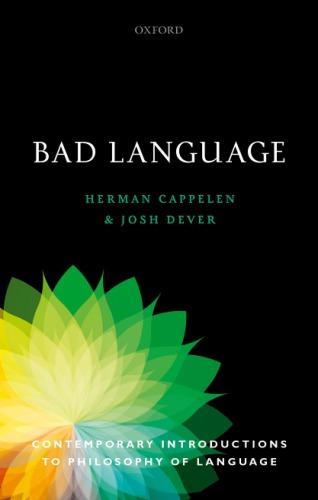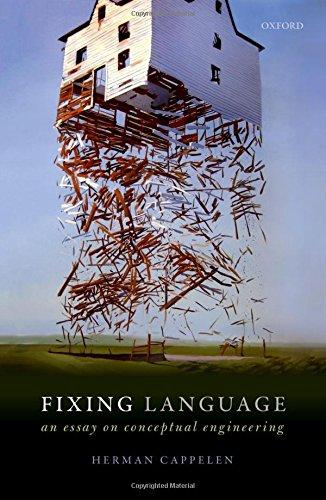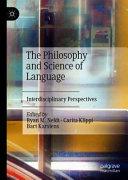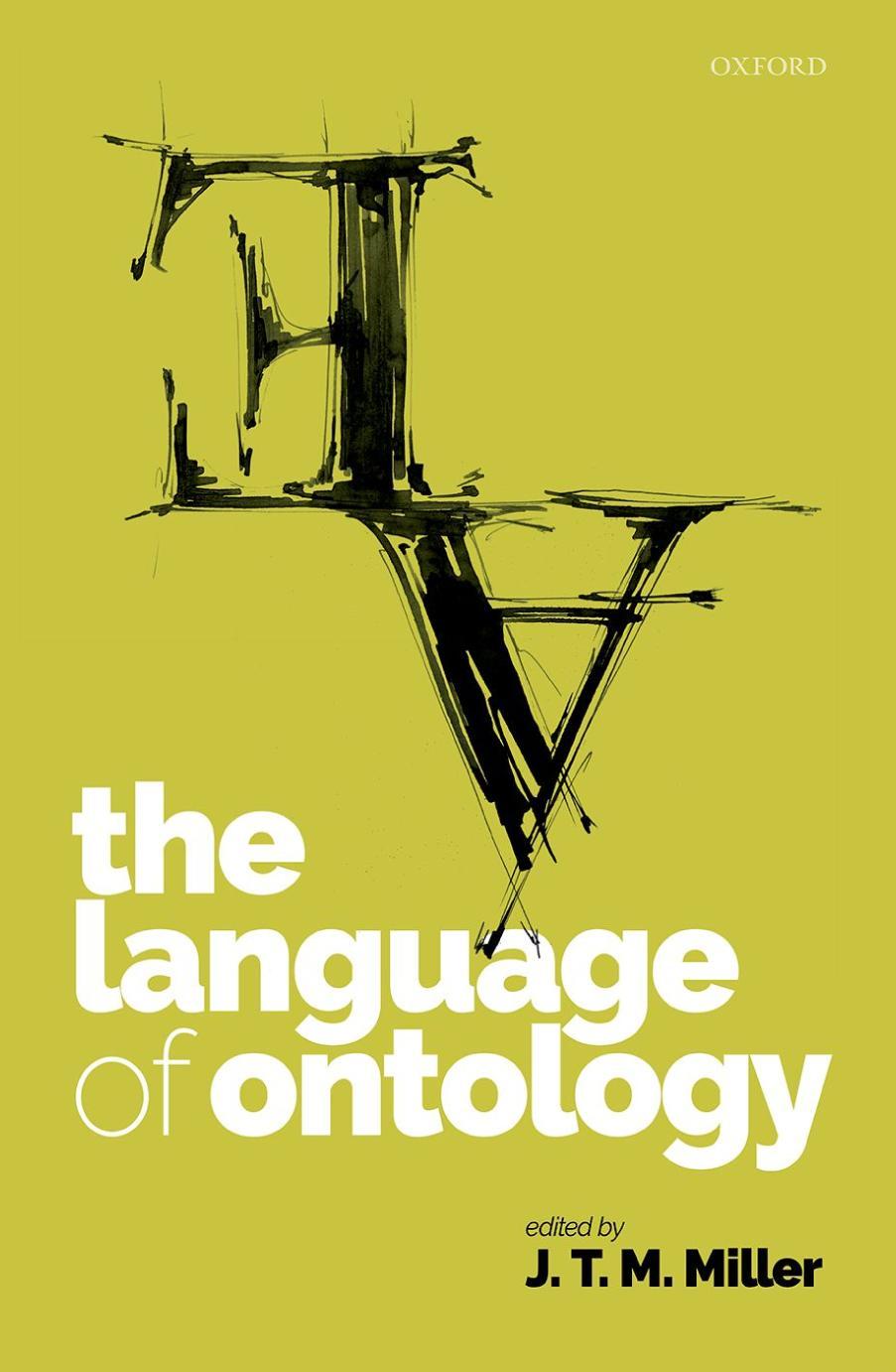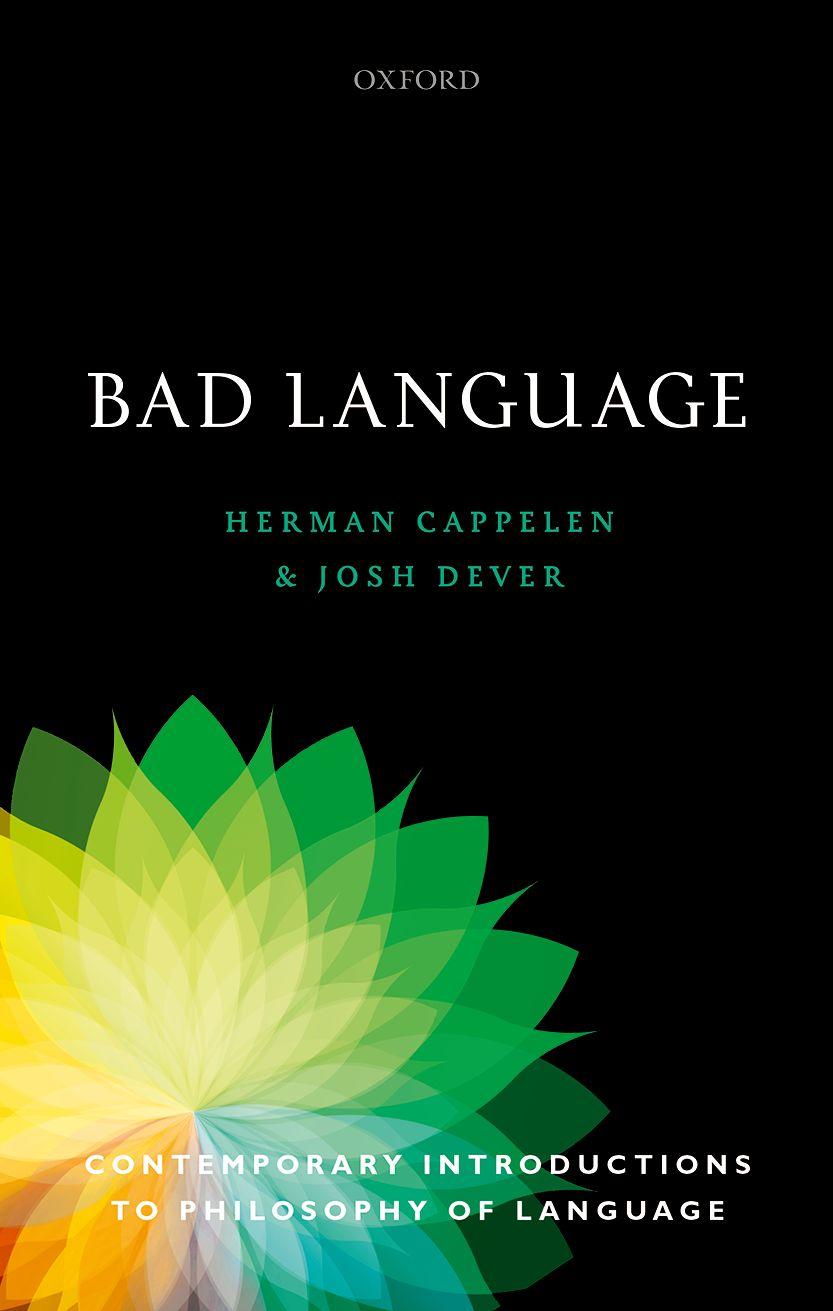DetailedContents
3.2.5Thegrayareasbetweenlying,misleading,anddeception
3.2.6What
4.1.1 ‘Bullshitisagreaterenemyoftruththanliesare’
4.1.2Whysomuchbullshit?
4.1.3SomeconcernsaboutFrankfurt’sdefinitionofbullshit
4.2FromLying,Misleading,andBullshittoFakeNews
4.3DeepBullshit(i.e.,NonsenseandGibberish)
4.3.1Howcantherebemeaninglessspeech?
4.3.2Carnapandlogicalpositivistsonnonsense
4.3.3Nonsenseincontemporarytheoryofmeaning
4.3.4Theoreticalgibberishandcharlatans
4.3.5Meaninglessnessinordinarylanguage: ‘ race ’ asan illustration
4.3.6Cantherebeillusionsofthought?
5.ConceptualEngineering73
5.1IntroductiontoConceptualEngineering:WeCareabout
5.2TheMasterArgumentforConceptualEngineering (andaLittleBitofHistory)
5.3SomeChallengesforConceptualEngineers
5.3.1Challenge1:inwhatsensecanmeaningsbedefective?
5.3.2Challenge2:doesn’tmeaningchangeresultin verbaldisputes?
5.3.3Challenge3:ismeaningchangewithinourcontrol? TheDynamicLexiconvstheAusterityFramework
6.SlursandPejoratives90
7.LexicalEffects111
7.1IntroducingLexicalEffects:TheNon-Cognitive, Associative,EffectsofWords
7.2Non-CognitiveLexicalEffects:SomeIllustrations
7.2.1Davidsonontheeffectsofmetaphor
7.2.2Brandnamesandnamesforpeople
andTheoreticalWork
8.GenericsandDefectiveReasoning126
8.1Introduction:WhatareGenerics?
10.LinguisticOppressingandLinguisticSilencing160
ficultyofdistinguishingbetweentacit consentandsilencing
12.ThoughtsonIdealvsNon-IdealTheoriesofLanguage196
Preface
Muchphilosophyoflanguageisanefforttotheorizeaboutlanguageas anidealizedobjectandcommunicationasanidealizedactivity.Thisis naturalbecausemanytheoreticaladvancesresultfrommakingidealizing assumptions.However,atsomepointit’simportanttomoveawayfrom theidealizationandbacktotherealworld.Thisbookisanintroduction tosomeofthelinguisticphenomenathatcomeintofocusonlywhen standardidealizingassumptionsaredropped.Weliveinaworldwhere speakersconstantlylieandarenon-cooperative:theysaythingsthat makenosense;theyinsult,bullshit,silence,andcoerceeachother.This bookisanintroductiontothesedarkersidesofreal-worldlanguageuse. Alternativetitlesforthisbookcouldbe ‘LanguageintheRealWorld ’ or ‘TheDarkSideofLanguageUse’ .
Aswiththeotherbooksinthisseries,thisbookis not meanttobea comprehensiveguide thedarksideoflanguageistoovastforustocover itallinonebook.Wedon’taspiretocomprehensiveness.Instead,wehave pickedsome topics, views,and arguments thatwethinkare important, interesting,and instructive.Ourhopeisthatareaderwhohasunderstood andengagedwiththisselectionofmaterialwillbeinagoodpositionto startengagingwithmuchoftheworkwedon’tcoverinthisbook.
Thebookiswrittentobeaccessibletosomeonewithnopriorknowledgeofthematerial.Itcanbeusedaspartofaphilosophyoflanguage courseoraspartofageneralintroductiontophilosophy.
Weinitiallysetouthopingtowriteasinglebookthatcouldserveasan introductiontophilosophyoflanguage.Wegaveup.Wenowthinkthat goalistooambitiousforanyonebook.Thereissimplytoomuchinterestingworkthathasbeendonewithinthis fieldoverthelast100yearstocover itall(orevenmostofit)inasinglebook.Abookthattriedtodothatwould inevitablybesosuperficialthatitwouldfailtoconveytothereadershow rich,complex,andimportantthesetopicsare.Todojusticetothe fieldwe havesetouttowriteaseriesofintroductionstophilosophyoflanguage, eachonecoveringanimportanttopic,eachoneofwhichwouldbeaway intothe fieldasawhole.Thesebooksaimtoprovidesystematicintroductionstoimportantquestions,data,theories,andarguments.Thoselooking forahistoryofthedisciplineshouldlookelsewhere.
Acknowledgments
MatthewMcKeeverwasourresearchassistantfortheentireperiodwe workedonthisbook.Hedidanextraordinaryjob(ashealsodidhelping uswiththe firsttwobooksinthisseries).Similarly,JoshuaHabgoodCootehelpedalotwiththeearlystagesofthisbookandgaveusmany usefulsuggestions.Inthe finalstageswealsogotinvaluableassistance fromDeborahMarberandMatthewCameron.OureditoratOUP, PeterMomtchiloff,suggestedthetitleforthebookandprovidedmuch appreciatedcontinuoussupport.
1 IdealizedCommunication
Inthisbookweareinterestedinhowlanguageworksintheroughand tumbleoftherealworld,fullofhucksters,shysters,manipulators,and bullshitters.Acentralprobleminthinkingcarefullyabouttheroleof languageinthisroughandtumbleisthatourtheoreticaltoolsfor analyzinglanguagehavebeendevelopedusingexamplesofthemuch moredemuresettingoftheclassroom.Intheclassroom,weareall scholars,andweimagine(orhope)thatthereisnomererhetoric, nolies,nodeception,andnoobfuscation.¹Ifwemodelourtheoriesof languageonthissetting,thenwewilltellahighly idealized pictureabout howlanguageworks.Thehighlyidealizedpicturehastheadvantageof beingsimple,butitssimplicityisadefectwhenitcomestimetostep outsidetheclassroomandconsiderhowmeremortalsuselanguage. Beforewestartconsideringhowtouseandmodifyourexistingtheoreticaltoolstodealwithadecidedly non-ideal world,weneedtounderstand whatsimplifyingassumptionswentintothosetools.
1.1SevenTypicalIdealizations
Inwhatfollowsweoutlinesomeidealizationsthathaveguidedmanyof theeffortstotheorizeaboutnaturallanguage,communication,and speakers.Thereisnoonesetofidealizationsthatarecommontoall theorists,butthesevenidealizationswesketchbelowarerepresentative ofmuchcontemporarywork.
¹Ofcourse,foranyonewhohasbeeninaclassroom,thisisaveryidealizedpictureof whatgoesoninthere,andtheidealizationsthatwediscussbelowwillfailtoholdtrueof manyclassrooms.
1.1.1Cooperation
Muchworkonlanguagetakeswell-orderedclassroomconversationsas themodelforhowlanguageworksingeneral.Intheclassroom,weare (atleastsometimes)engagedinacooperativeandcollaborativeeffortto workoutwhatistrue.PaulGricehelpedgivecooperativenessacentral placeintheorizingaboutlanguagebyformulatingwhathecalledthe CooperativePrinciple:
Makeyourconversationalcontributionsuchasisrequired,atthestageatwhich itoccurs,bytheacceptedpurposeordirectionofthetalkexchangeinwhichyou areengaged.(Grice(1989):26)
GricethinksoftheCooperativePrincipleasarulethatweexpecteach othertobefollowingwhenwespeak.AsGricesays:
Ourtalkexchangesdonotnormallyconsistofasuccessionofdisconnected remarks,andwouldnotberationaliftheydid.Theyarecharacteristically,to somedegreeatleast,cooperativeefforts;andeachparticipantrecognizesinthem, tosomeextent,acommonpurposeorasetofpurposes,oratleastamutually accepteddirection.(Grice(1989):26)
Thisgivesusour firstidealizingassumption:
Idealization1:Conversationandcommunicationarefundamentally cooperativeactivities.Inaconversation,thereisagoaltobeachieved, andeachparticipantintheconversationcontributestotheconversationinanattempttofurtherthatgoal.
Itshouldbeclearoffthebatthatwhenwedescribethisasanidealization, we ’rebeinggenerous.Ofcourse,it’sfarfromclearthattypicalinteractionswithotherpeoplearefundamentallycooperative.Thisappliesas muchtolinguisticinteractionsastherestoflife.
Grice’sidealizedpicturehashadmassiveinfluenceontheorizingabout language.Itisnotjustthebasicpictureofconversationasafundamentally cooperativeenterprise;Gricealsosuggeststhatifwearebeinggenuinely cooperativeinconversation,thishasanumberofconsequencesforhowwe willplanourconversationalcontributions.Inparticular,Gricesetoutfour maxims,generalrulesgoverninghowthecooperativespeakerwillspeak:
MaximofQuality:Trytomakeyourcontributiononethatistrue,by notsayingwhatyoubelievetobefalseorsayingthatforwhichyou lacksufficientevidence.
MaximofQuantity:Makeyourcontributionasinformativeasis requiredforthecurrentpurposes,anddonotmakeyourcontribution moreinformativethanisrequired.
MaximofRelation:Berelevant.
MaximofManner:Beperspicuous:avoidobscurityofexpression, avoidambiguity,bebrief,beorderly.(Grice(1989):26–7)
Grice ’sidealizedcooperativespeakerthusattemptstoprovide,ina clearway,arelevantandappropriateamountofcorrectinformation. Andaudiencesassumethatspeakersareattemptingtoprovidethese things.Thisgivesusasecondidealization:
Idealization2:SpeakersattempttoconformtoGrice’smaxims,and audiencesassumethatspeakersareattemptingtoconformtothe maximswhentheyinterprettheircontributions.
1.1.2Knowledgeastheaim
Idealization1onlytellsusthatthereis some goalthatwearetryingto achieve,andthatweareworkingtogethertowardthatgoal.Butinthe classroom,thereisa particular goalthatwearetryingtoachieve.We aretryingto accumulateknowledge .Perhapsthetopicoftheclassis thegeographyofScotland.OneofusknowsthatBenNevisisthetallest mountaininScotland.AnotherofusknowsthatLochLomondis thelargestlakeinScotland.Butbeforewebegintheconversation, our collective knowledgeaboutScottishgeographyisverylimited. Conversationisthenintendedtocorrectthatde fi ciency.Ifwewereto pursuetheideathatallconversationsshouldbemodeledonwhatwellbehavedacademicsdointheclassroom,onemightintroduceathird idealization:
Idealization3:Thegoalofaconversationistobuildupabodyof knowledgesharedbyalloftheconversationalparticipants. Itshouldbeclearthatthisisamassiveidealizationbecausealotofpeople don’tcareaboutknowledge:theyengageinspeechforreasonsthathave nothingtodowithtryingtoaccumulateknowledge.Theymightwant, forexample,toembarrassormakefunoforencourageorrepress.More generally,speakerscanhaveanynumberofgoalsthatareunconnected tosharingknowledge.
Inlaterchapterswewillreturntothispoint,butfornow,let’spushon withtheidealization.Ifweassume,forthesakeofargument,thatthegoal oftheconversationistobuildupabodyofknowledge,thenwecantrack howwelltheconversationisgoingbytrackinghowmuchknowledge we ’veaccumulatedsofar:themoreknowledge,thebetter.Thisallowsus toassignakindof ‘ score ’ toeachconversation.DavidLewis(1979) suggeststhataconversationislikeabaseballgame.Toplaybaseball, youhavetokeeptrackofwhatthescoreis thescorenotjustinthe senseofhowmanyrunshavebeenscoredbywhichteam,butinthe moreexpansivesenseoftellingusthefullstateofthegame:whatinning itis,howmanyouts,strikes,andballsthereare,andwhichrunnersare onwhichbases.Actionsinabaseballgamethenregularlychangethe score,andplayersneedtokeeptrackofhowthescoreischanging. Thescoreboardisapublicobject,shared,tracked,andmodifiedbyallthe participantsinthegame.Similarly,saysLewis,languageisakindofgame withvariouskindsofmoveswhichhavevariouseffectswecantrackon theconversationalscoreboard.Lewisconsiderssomequitecomplicated kindsofscoreboards(someofwhichwe’llreturntoinlaterchapters),but inouridealizedclassroom,theonlyscoretokeepistheamountof knowledge.Wecanthustrackthestateofaconversationbytracking oursharedknowledge.Thisgivesusafourthidealizingassumption:
Idealization4:Thestateofaconversationatanypointcanbemodeled bythe commonground oftheconversation:thethingswhichare sharedknowledgeforalloftheconversationalparticipants.
Whatdoesitmeanforsomethingtobesharedknowledgebetweenallof theconversationalparticipants?It’snotenoughthateachparticipant knowthatthing.Thatkindofdistributedindividualknowledgemisses outonthecollaborativenatureoflanguage.Distributedindividual knowledgeisn’tsuf ficientforgettinguscoordinatedinimportantways. SupposeAlexandBethareworkingtogethertomakeanomelet.The eggsneedtobebeaten,andthemushroomsneedtobesautéed.IfAlex knowsthesetwothingsneedtobedone,andBethalsoknowsthatthese twothingsneedtobedone,butAlexdoesn’tknowthatBethknows,then Alexwon’tbeabletofocusonbeatingtheeggs,confidentthatBethwill sautéthemushrooms.Theyneedtobothknowwhatneedstobedone, andtobothknowthattheybothknowwhatneedstobedone.That commongroundcanbeachievedlinguistically,byhavingAlexsay,and
therebyputontheconversationalscoreboard,thatinordertomake anomelettheeggsneedtobebeatenandthemushroomsneedtobe sautéed.Thisgivesusa fifthidealizingassumption:
Idealization5:Thecommongroundofaconversationiswhatisknown byalltheconversationalparticipants,andisknowntobeknownbyallof them(andknowntobeknowntobeknownbyallofthem,andsoon).
Ifthegoalofconversationsistobuildabodyofcommonknowledge, thenweshouldexpectspeechtobegovernedbythenormthatweonly saywhatweknow.Ifweassumethatspeakersfollowthisnorm,thisgive usasixthidealization:
Idealization6:Speakerssayonlywhattheyknow. Finally,theidealizedpictureneedstosaysomethingabouthowspeakers areabletoputthingsontheconversationalscoreboardbysayingthem. Returnagaintotheclassroomwhereourwell-behavedacademicsare tryingtolearnaboutthegeographyofScotland.Initiallyitisn’tonthe scoreboardthatBenNevisisthetallestmountaininScotland.Oneofus knowsthat,butitisn’tcommonknowledgetousall.Butthentheone whoknowsitsaysthatBenNevisisthetallestmountaininScotland,and itgoesontothescoreboard.Shedoesthatbyutteringthesentence ‘Ben NevisisthetallestmountaininScotland. ’ Forthistoworkwehaveto makeaseventhidealization:
Idealization7:Acommonlanguagehaswordswithstablemeanings knowntoallconversationalparticipants,sothatspeakerscanmake theircommunicativeintentionsmanifestbyusingsuitablewords.
1.2TakingStockandReturning totheRealWorld
Sohereisalistofrepresentativeidealizationsthatoftengoverntheorizingaboutlanguage:
Idealization1:Conversationandcommunicationarefundamentally cooperativeactivities.Inaconversation,thereisagoaltobeachieved, andeachparticipantintheconversationcontributestotheconversationinanattempttofurtherthatgoal.
Idealization2:SpeakersattempttoconformtoGrice’smaxims,and audiencesassumethatspeakersareattemptingtoconformtothe maximswhentheyinterprettheircontributions.
Idealization3:Thegoalofaconversationistobuildupabodyof knowledgesharedbyalloftheconversationalparticipants.
Idealization4:Thestateofaconversationatanypointcanbemodeled bythe commonground oftheconversation:thethingswhichare sharedknowledgeforalloftheconversationalparticipants.
Idealization5:Thecommongroundofaconversationiswhatisknown byalltheconversationalparticipants,andisknowntobeknownbyallof them(andknowntobeknowntobeknownbyallofthem,andsoon).
Idealization6:Speakerssayonlywhattheyknow.
Idealization7:Acommonlanguagehaswordswithstablemeanings knowntoallconversationalparticipants,sothatspeakerscanmake theircommunicativeintentionsmanifestbyusingsuitablewords.
Thesekindsofidealizationsmakeforsimplemodelsthatexplainreal worldphenomenaonlytotheextenttherealworldcorrespondstothe idealizations.ConsideragainAlexandBeth’sScottishgeographyconversation.Here’sasummaryofanidealizedconversationbetweenthem:
IdealizedExplanationofaMoveinaClassroom-StyleConversation: AlexandBethentertheclassroomfriendlyandongoodterms. They’renottheretoteareachotherdown,buttopursueacommon goal(Idealization1).Inparticular,theircommongoalistopooland increasetheirbodyofknowledge,withaspecificfocusinthisconversationonthequestionofwhatScotland’sgeographyislike(Idealization3). Atthebeginningoftheconversation,AlexknowsabitaboutScottish geographyandBethknowsabit,buttheyknowseparatethingsand neitherofthemknowswhattheotherknows,sotheircommonknowledgeofScottishgeographyisempty.Theyhavenocommongroundat thispoint.AlexknowsthatBenNevisisthetallestmountaininScotland andwantstosaysomethingthatmakesthatcommonknowledge(Idealization4).SheintendscooperativelytofollowtheGriceanmaxims,and torelyonBeth’ sconfidencethatshe’llbefollowingthemaxims(Idealization2).Asaresult,BethwilltrustwhatAlexsays.Alexknowsshecan makeherintentionmanifestbypickingfromthecommonandstable languagewordsoftherightmeaning(Idealization7).Alexthusuttersthe
sentence ‘BenNevisisthetallestmountaininScotland.’ Sincethe languageisstableandcommon,Bethknowswhatintentionisassociated withit,andsinceshecanassumethatAlexhasnohiddenagenda,shecan locatetherightcommunicativeintentioninAlex.SinceBethknowsthat Alexwillonlyintendtocommunicatethingssheknows(Idealization6), BethcanuseherrecognitionofAlex’scommunicativeintentionas asourceofknowledgethatBenNevisisthetallestmountaininScotland, andsincethat’snowcommonknowledge,itbecomespartofthecommongroundandgoesontotheconversationalscoreboard.
That’salongandcomplicatedstoryaboutgettingacrossasmallbitof informationaboutafranklyrathersmallmountain.Butlinguisticcommunicationisaratherimpressivething(it’sliketelepathyachievedby movingyourlips,oranamazingdeviceforusingsoundwavestocontrol theneuralwiringsinanotherperson’sbrain),andthiscomplicated picturewhichseparatesoutthemanyelementsofcommunicationhas provenveryhelpfulinthinkingaboutlanguageuse. Allofthis,though,happensintheclassroomwherethingsarerelativelynon-messy.Thisbookisforthemostpartaboutwhathappens whenwestepoutsidetheclassroomandconsidersarangeofquestions aboutwhathappenswhenthingsarenotquitesoideal.Wefocuson questionssuchasthefollowing:
• Whatarethevariouswaysinwhichnon-cooperationbetweenAlex andBethunderminesorcontributestotheirconversation?
• Whatifoneoftheirgoalsisn’ttobuildupabodyofknowledge,but insteadtoachievesomethingthatisdisconnectedfromtruthand knowledge?
• Whathappensifoneofthemspeaks,buthasnointerestinspeaking thetruth?
• Whathappensifoneofthemuseswordsthatmeannothing(andso there’snosharedmeaning)?
• Whathappensiftheydisagreeaboutwhatthemeaningofwordsare?
• Whathappensifoneofthemuseswordsinordertooffendor triggervariousemotionalreactions?
• Howdoweunderstandconversationswhereoneoftheparticipants’ contributionsarecoercedorwhereoneparticipantissilenced?
• Whatdowesayaboutcaseswhereit’sunclearwhothespeakerisor whattheintendedaudienceis?
Inshort,thefocusofthisbookisonlanguageusethatfailstosatisfy theidealizations.It’slikelythatmostuseoflanguagefailstosatisfyat leastoneoftheidealizationsandtypicallymanyofthethem.Thatfact raisesinterestingandcomplicatedquestionsaboutwhyphilosophers introducedtheidealizedpictureinthe firstplace.Ifitfailstodescribe themajorityofspeakersandtheirspeech,whydidphilosophersendup workingwiththeoriesthatmakethoseidealizingassumptions?We returntothatquestioninChapter12wherewehavemoretosayabout theroleofidealizationsintheorizingmoregenerally(inthesciencesand politicaltheoryinparticular).
1.3SomeQualifications
Wejustgaveabroadsketchofsomeidealizationthatareoftenappealed tointheorizingaboutlanguageandcommunication.Thatsketchshould beaccompaniedbyacoupleofquali fications:
• Firstquali fication:Wesaidthattheseidealizationsguide many of theeffortstotheorizeaboutnaturallanguage,communication,and speakersofthelast100years.Wedidnotsayitguided all suchefforts. Morethan100yearsoftheorizinghasgeneratedanenormousamount ofliteraturefromvariedperspectives.Someofthatwork(e.g.,that inspiredbythelaterWittgenstein)questionstheidealizations.
• SecondQualification :Wealsohavenotsaidwhytheseidealizations havegovernedsomuchtheorizingaboutlanguageandcommunication.Theanswertothisquestionhasatleasttwoparts.Onepartofthe answerishistorical:ithastodowiththeoriginofphilosophyof language(andlinguistics)andthekindsofintereststhatguided thosewhofoundedthesedisciplines.Thisisnotahistorybookand sowewillreferreaderstoothersourcesforthat(seesuggestionsin FurtherReadings).Thesecondpartoftheanswer,however,isthatthe theoriststhatmakethese(andrelated)idealizationsthinktheyare fruitful.Theythinkthatwewilldevelopgoodtheoriesifwebased themontheseidealizations.Thatlineofthoughtisexploredfurtherin thelastchapterofthebook.Inthatchapterwetalkmoregenerally aboutthevalueandnatureofidealizationsintheorizing.
Insum:thepurposeofoutliningtheidealizationsisnottowriteacareful historyofphilosophyoflanguage,buttocreateausefulheuristic(an
idealization,ifyouwill):ithelpsusintroducereaderstoarangeof phenomenathatareeasiertounderstandandengagewithwhencontrastedwiththeidealizedpicture.
1.4AnOverviewoftheBook
Thenexttenchapterseachdealwithvariouswaysinwhichactual languageusedivergesfromtheidealizationssetoutabove.
• Thesecondchapterisaboutvariouswaysinwhichspeakerscommunicatecontentotherthanwhattheyliterallyexpress.Weprovide abriefintroductiontoimplicaturesandpresupposition,aswellasto whatwecall ‘contextcontrol’ .
• Thethirdchapterdescribesvariouswaysinwhichspeakersdon’t tellthetruth.Insomecasestheymakehonestmistakes.Sometimes theywrite fiction.Moretroublingactsincludelying,deception,and misleading.Thischapterisprimarilyanintroductiontocontemporarytheoriesoftheselastthreephenomena.
• Thefourthchapterhastwoparts.The firstisanintroductionto contemporarytheoriesofbullshit:itisaboutpeoplewhospeak withoutanyregardfortruth.Thesecondpartisaboutwhatwe call ‘deepbullshit’:peoplewhospeakwithoutregardtowhether whattheysaymakesanysense.
• The fifthchapterisanintroductiontotheexciting fieldofConceptualEngineering:thestudyofhowconcepts(ormeanings)canbe defectiveandhowtheycanbeimproved.
• Chapter6introducesthereadertocontemporarytheoriesofslurs andpejoratives.Thevarioustheoriesaredividedintofour:DescriptiveContentViews,PresuppositionalViews,ExpressivistViews, andProhibitionistViews.
• InChapter7weintroducethereadertoLexicalEffects:thesearethe variousnon-cognitiveeffectsthatwordshaveonspeakers(think aboutthehowdifferentyoufeel(orthedifferentassociationsyou get)whenyoureadthewords ‘fart’ , ‘ rose ’,and ‘fascist’,respectively).
• Chapter8isanintroductiontothewaysinwhichgenericclaims canleadtodefectivereasoningandthewaysinwhichtheseexpressionscanbeinvolvedinthepromotionofsocialprejudiceand essentializing.
• InChapter9we firstdescribewhathappenswhenaspeaker’ s audienceisscattered(forexamplewhenshespeakstoseveralpeople orgroupsofpeoplesimultaneously).Wethenturntowhathappens whenthespeakeritselfisscattered,suchaswhenagroupspeaksor writesadocument(forexamplealaw).
• Chapter10startswithabriefintroductiontospeechacttheoryand thenturnstolinguisticoppression(oppressiondoneinspeech).We thendiscussthephenomenonofsilencing:waystomakeitdifficult orimpossibleforsomeonetosaywhattheywanttosay.
• Theeleventhchapterisaboutthespeechactofconsent.Wediscuss whatconsentis,theadvantagesanddisadvantagesoftacitconsent, andwhetherdeceptioncaninvalidateconsent.
• Inthetwelfthand finalchapterofthebookwereturntothethemes fromthe firstchapterinlightofthepreviousdiscussion.Ten chaptersofthisbookdescribethemyriadofwaysinwhichspeakers don’tconformtotheidealizationsinChapter1.Doesthatmeanthe idealizationsareuseless?Wecompareidealizationsaboutlanguage toidealizationsinnaturalscienceandpoliticaltheory.
CENTRALPOINTSINCHAPTER
• Whatisappropriatespeechfortheclassroommaynotbeappropriateforthe businessmeeting,date,bar,orpoliticalrally.Theoristsoflanguagealltoo frequentlyconcentrateontheformersortoflanguageuse,andthusstartfrom anidealizedpictureofhowlanguageworks.Thisbookisconcernedwithhow tousethetheoreticaltoolswedevelopedforthestudyoflanguageinthehighly non-idealrealworld.
• Wenotedsevenidealizationsthatphilosophersoflanguageandlinguistsoften make.Throughoutthebook,wewillseearangeofcasesinwhichthese idealizationsfailtoapply,andattheendwe’llstepbackandseewhatif anythingthismeansfortheorizingaboutlanguageingeneral.
• The firstidealizationhasitthatcommunicationisacooperativeventure:ina conversation,eachparticipantisworkingtowardsacommongoal.Thesecond idealizationspecifiessomerulestohelppeopleachievethesesharedgoals: Grice’sconversationalmaxims.
• Thenextidealizationsconcernknowledge.Theysay,respectively,thatthegoal ofconversationmentionedaboveistobuildupabodyofsharedknowledge, thatthiscanbemodeledintermsofacommonground,andthatcommon groundconsistsofsharedknowledge:whatisknown,knowntobeknown,
knowntobeknowntobeknown,andsoon,byalltheparticipantsinthe conversation.
• The finaltwoidealizationstellusthatspeakerssayonlywhattheyknow,and thatlanguagehaswordswithstablemeaningsknowntoallparticipants.
2 ThreeFormsofNon-Ideal Language
Westartwithsomemilddeviationsfromtheidealizationsintheprevious chapter.Intheidealizedsetting,everythinggoingonwithcommunicationisovertandonthesurface.Herewewillconsidersomesmallways inwhichlanguageandcommunicationcanbemadedevious,withsome oftheworkandsomeofthemachineryhiddenfromview.Acertain amountofdeviousnesscanbeagoodthing byhidingthingsfrom view,wecanmakecommunicationfaster,moreef ficient,andeasier.But, aswe ’llseeinlaterchapters,oncethingsgethiddenfromview,they becomepotentialtoolsforlinguisticmanipulationandbadbehavior. Thespecifi ctopicswediscusshereinvolveviolationsoftheidealizing conditionssetoutinChapter1thathavebeenextensivelystudiedby linguistsandphilosophersoflanguage.Thetoolsdevelopedtohelp explainthesephenomenawillhelpusexplainanddescribethemore severeformsofnon-cooperativecommunicationthatwewilladdressin laterchapters.
2.1DeviousIntentions:Conversational Implicature
Inidealcircumstances,speakersobey(andaudiencesexpectspeakersto obey)Grice ’smaximsofquality,quantity,relation,andmanner.Inthe simplestcases,theyobeythesemaximsstraightforwardly,bypicking sentenceswhoseconventionalmeaningsgiveinformationthatistrue andrelevant.Butinmorecomplicatedcases,speakerscanstillbe cooperativeandfollowthemaxims,butfollowthemmoreindirectly anddeviously.
AlexandBetharepreparingforadinnerparty.Considerthe followingdialog:
ALEX :WhenshouldIputoutthewine?
BETH :Theguestsarearrivingat7:00.
Beth’sresponseinitiallylookslikeitviolatestheGriceanmaximof relation.Alexhasaskedaquestion,andBeth’sanswerdoesnothingto addressthatquestion.ButBethisn’tbeinggenuinelyuncooperative. She’scaughtinaconversationalbind.Beingapoorenologist,shedoesn’t knowhowquicklytoexpectthewinetowarmuporwhattheideal temperatureisforthewinetobeservedat.Beingcooperative,shewants toobeythemaximofquantity,andsupplyinformationthatshethinksis true,soshedoesn’twanttojustmakeupatime.Soshesayssomething thatlooksirrelevant,butsheassumesthatAlexwillassumesheis,infact, doingherbesttoberelevant.AlexwillthenunderstandthatBeth, followingthemaximofquantity,isprovidingasmuchinformationas shecanaboutthequestion.Sinceshehasn’tdoneanythingtoanswerthe questiondirectly,AlexcanworkoutthatBethdoesn’thaveanydirect answertoit,andinturncanworkoutthatsheisrelyingonAlex’ s superiorenologicalknowledgetoworkbackwardfromthetimeofarrival tothepropertimetosetoutthewine.AlexthusunderstandsBethas communicatingthatshedoesn’tknowenoughaboutwines,butAlex does,andcanpicktheappropriateamountoftimethatthewinerequires toreachidealservingtemperature,andthatAlexshouldsetoutthewine thatamountoftimepriorto7:00.
Beth,ofcourse,couldjusthaveexplicitlysaidthat.Butshedidn’tneed to.Shewasabletoexploitthebackgroundassumptionthatshewas conformingtotheGriceanmaximstocommunicatemorethanher wordsexplicitlysaid.Thesentencethatsheuseddidn’texpressacontent thatbyitselfwouldhavebeenrelevant,sotheassumptionthatBeth was beingrelevanttriggersasearchforsomethingmorethatshemighthave beensaying.ThisinturnleadstotheconclusionthatBethwasindirectly communicatingthatshehadnorelevantinformationtoprovide.Inthese sortsofcases,Gricesaysthatthespeakeris flouting themaxims:giving thesurfaceappearanceofviolatingthemtoforceaudiencestolookfor afurthercommunicatedcontentthatis,afterall,inkeepingwiththe maxims.Bethdidn’t say thatshedidn’tknowhowlongittookthewine towarmup,butshe meant and communicated that.Asabitoftechnical
vocabulary,wesaythatinsuchcasesthespeaker conversationallyimplicates something:
ConversationalImplicature:Aspeakerconversationallyimplicates thatpiftheymeanthatp(theyhavetheGriceancommunicative intentionofgettingtheiraudiencetoknowthatp),buttheydonot explicitlysaythatp(thesentencetheyutterdoesn’tmeanthatp).
Audiencescanthenworkoutwhatthespeakermeansbyassuming thatthespeakeris(really,despitethe flouting)followingtheGricean maxims,anddeterminingwhatcommunicativeintentionwouldmake whattheyexplicitlysaidconformtothemaxims.
Conversationalimplicatureisamildcaseofcommunicativedeviousness. Thespeakerisallowingmoreofthecommunicativeburdenthanusualto fallontheaudience:theaudienceisnotcalledononlytoworkoutwhat thesentencesusedmean,butalsotodosomepsychologicalcalculation, workingoutwhyacooperativespeakerwouldhaveusedthosesentences andhowtheirusecouldhavebeenpartofacommunicativegoalin keepingwiththemaxims.TheexampleofAlexandBethinvolved floutingthemaximofrelation,butsimilarcasescanbeconstructed involvingthe floutingofothermaxims.
2.2WhyBotherwithImplicatures?
Intheclassroom,perhapsnooneisdevious,andeveryonesaysexactly whattheymean.Butinactualsocialinteractions,thedeviousnessof conversationalimplicatureiscommon.Thisdeviousnesscanplaya numberofdifferentfunctions:
1.Onepedestrianreasonforusingconversationalimplicaturesisthat theyallowformorebrevityincommunication.Bethcouldhavesaid, ‘Idon’tknowwhentosetoutthewinebecauseIdon’tknowmuchabout wine,andsoinparticulardon’tknoweitherwhattemperaturethewine shouldbeatwhendrunkorhowlongitwilltakethewinetoreachthat temperature.ButIknowthatyouknowalotaboutwine,andprobably doknowthosethings.Andfromthetimeofarrivaloftheguestsyoucan thenworkoutusingthatknowledgewhenthewineshouldbeputout.So I’mlettingyouknowthattheguestsarearrivingat7:00.’ Butthat’salot tosay.Ifshecangetawaywithjustsaying ‘theguestsarearrivingat7:00’ ,
